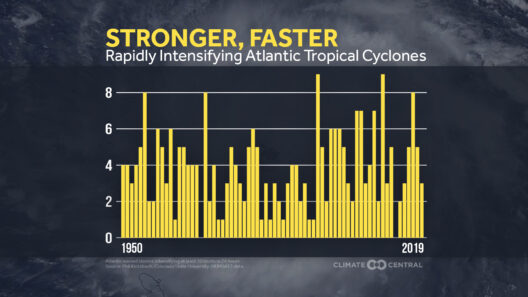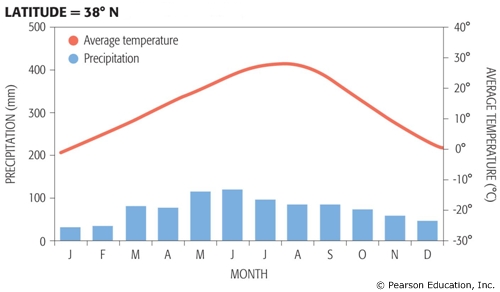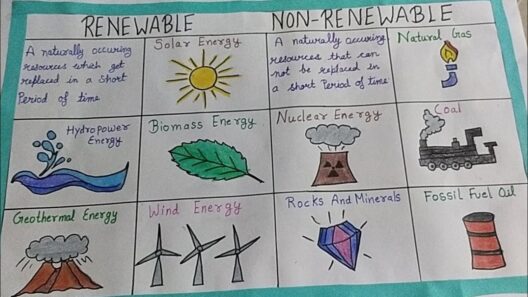Indonesia, an archipelagic nation comprising over 17,000 islands, is at a critical juncture in its energy evolution. As the country grapples with the dual challenges of rapid economic growth and environmental degradation, the imperative to pivot toward renewable energy sources becomes increasingly evident. This transition is not merely a passing trend but a fundamental shift towards sustainability, crucial for combating climate change and ensuring energy security.
The Indonesian government has acknowledged the pressing need to diversify its energy portfolio, predominantly dominated by fossil fuels, particularly coal and natural gas. As the nation endeavors to fulfill its burgeoning energy demands—projected to rise by 8% annually—there is an urgent mandate to harness the bountiful renewable resources at its disposal. Indonesia is endowed with sun-drenched landscapes, abundant rainfall, and vast marine territories, which present a unique opportunity to embrace various forms of sustainable energy.
One of the most promising avenues for Indonesia’s renewable energy aspirations lies in solar energy. The country is situated near the equator, boasting some of the highest solar insolation rates globally. Harnessing solar power through photovoltaic technology could significantly mitigate the reliance on coal-fired power plants. Initiatives for solar energy expansion are already underway, with numerous projects in regions such as Bali and Java. These initiatives are poised not only to supplement the national grid but also to provide electricity in remote areas, where traditional energy access remains limited.
In addition to solar power, wind energy has also emerged as a feasible option. Indonesia’s geographical features, particularly its extensive coastline, present ample opportunities for offshore wind farms. The development of wind energy infrastructure could prove revolutionary, harnessing the steady maritime breezes to generate large-scale power. Current projects in locations like Gunung Kidul showcase how wind turbines can be integrated into Indonesia’s energy landscape, establishing a precedent for future endeavors.
Moreover, geothermal energy stands out as one of Indonesia’s most attractive renewable resources. As the world’s second-largest producer of geothermal energy, Indonesia possesses an immense potential that remains largely untapped. The country’s tectonic activity makes it an ideal location for geothermal plants, which could provide stable and continuous energy output. Notable scenarios like the Wayang Windu Geothermal Power Station exemplify the successful implementation of this technology, contributing significantly to local and national energy supply.
Biomass energy is another area ripe for exploration in the Indonesian context. With abundant agricultural residues—such as palm oil waste, rice husks, and wood chips—Indonesia can convert these materials into biofuels and biogas. This approach not only provides a renewable energy source but also addresses waste management issues and promotes rural development. Furthermore, converting agricultural waste into energy can enhance food security by creating a circular economy where waste becomes a valuable resource.
Hydropower represents yet another vital component of the energy shift. Indonesia’s numerous rivers, waterfalls, and vast rainforests are an ideal backdrop for small and large-scale hydropower projects. The development of micro-hydropower systems presents an innovative solution to electrifying rural communities while minimizing ecological disruption. Examples such as the PLTA Jatigede hydropower plant highlight how hydropower can play an integral role in reducing reliance on fossil fuels.
Despite these promising advancements, several challenges impede the swift transition to renewable energy in Indonesia. Firstly, regulatory frameworks may require bolstering to incentivize investments in green technologies. Streamlining processes for permits, licenses, and subsidies can encourage private sector participation, facilitating the development of renewable infrastructure. Furthermore, enhancing grid capacity and efficiency is paramount. The existing electrical grid in many regions is antiquated, necessitating significant upgrades to accommodate the influx of decentralized renewable energy sources.
Education and public awareness play crucial roles in fostering a culture of sustainability. A well-informed populace is more likely to support and adopt renewable technologies. Awareness campaigns highlighting the benefits of renewable energy, both environmentally and economically, can galvanize community action and engagement. Additionally, academic institutions can be crucial partners in research and development, driving innovations that propel Indonesia into a greener future.
International collaboration will also be indispensable as Indonesia embarks on this ambitious energy shift. Engaging with other nations to share best practices, technological advancements, and financial mechanisms can accelerate progress toward renewable energy goals. Bilateral partnerships and global climate agreements can facilitate knowledge transfer, aiding Indonesia in navigating the complex landscape of sustainable energy.
The future of Indonesia’s energy landscape hinges on a concerted effort to embrace renewables. By investing in solar, wind, geothermal, biomass, and hydropower, Indonesia can take monumental strides toward a sustainable and resilient energy future. As the nation advances this transformative agenda, the path ahead may be fraught with obstacles, yet the potential rewards—enhanced energy security, reduced carbon emissions, and a revitalized economy—are well worth the pursuit. Ultimately, Indonesia stands to become a beacon for renewable energy development in the region, showcasing the intersection of environmental stewardship and economic progress.
As Indonesia forges ahead on this critical journey, it reaffirms its commitment to safeguarding the planet for future generations. The energy shift is not just a necessity; it represents a moral imperative to foster a harmonious relationship between humanity and nature, ensuring that the resources of this breathtaking archipelago are not only preserved but celebrated for years to come.








